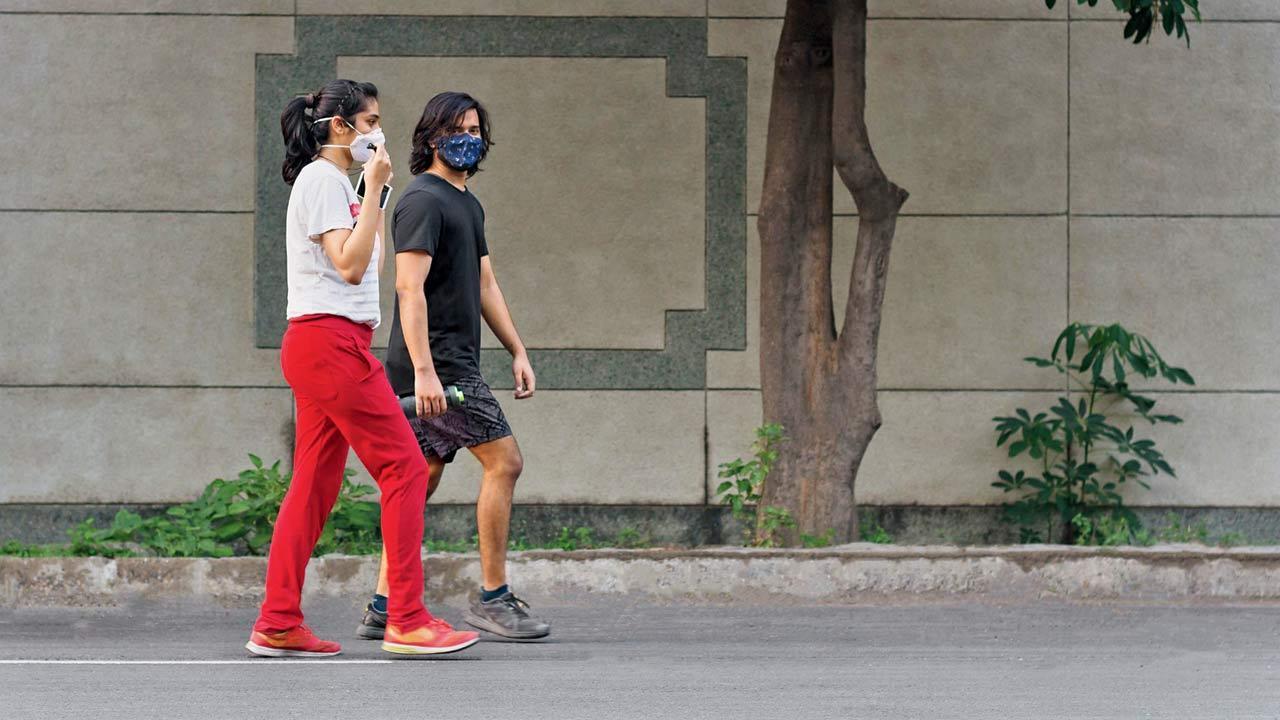Bombay’s changing landscape has diminished its walkability, stripping residents of open spaces and walkable paths. As we lose access to public spaces, this article reflects on the impacts and advocates for a more walkable, inclusive city.

The difference between what a walkable city looks like, and the reality of any street in Bombay, is stark. Representation pic/iStock
 When was the last time you took a stroll around your locality? It is a question I ask friends often, not because I want to shame them into exercising more, but because I can’t seem to recall the last time I did it with any semblance of pleasure. I grew up in a suburb far removed from the centres of entertainment and shopping that traditionally attracted visitors from across the city. To get to Colaba or Crawford Market involved two buses and a train, so large portions of my childhood were spent wandering around lanes and paths that meandered through my neighbourhood. There was a local Bombay, and a hyper-local one where time seemed to slow down a little.
When was the last time you took a stroll around your locality? It is a question I ask friends often, not because I want to shame them into exercising more, but because I can’t seem to recall the last time I did it with any semblance of pleasure. I grew up in a suburb far removed from the centres of entertainment and shopping that traditionally attracted visitors from across the city. To get to Colaba or Crawford Market involved two buses and a train, so large portions of my childhood were spent wandering around lanes and paths that meandered through my neighbourhood. There was a local Bombay, and a hyper-local one where time seemed to slow down a little.
ADVERTISEMENT
This may be hard to believe, but I also remember a time when children appeared to be everywhere. It may sound strange until you look around and see how rare it is to spot an unaccompanied child on your street. We would play cricket in public or private playgrounds and hide-n-seek along stretches of residential housing. We would climb trees because there were many of them, and because we could. And we did it all without the constant fear of being run over. All of this allowed our parents to take our access to play areas and open spaces for granted, much as we did.
That version of the city no longer exists. A week ago, I stumbled upon a post online about children becoming increasingly dependent on parents in urban India. It mentioned how difficult it was for children to get around on their own, and I was reminded of errands I would run for my parents, to the kirana store and back. I wondered if children could still do that without fear, and the answer troubled me because it pointed to how drastically things have changed for the worse.
Walking and the ability to walk is critical for lower and middle-income countries with the kind of density that is all too familiar across India. In cities as populated and poorly planned as Bombay, we fail to acknowledge that walking is the most affordable form of mobility for millions of fellow residents. We assume they simply cease to exist when we roll up our car windows and turn on our air-conditioners. It is the kind of selfishness that encourages governments to be cruel to the most vulnerable people they are supposedly responsible for. That cruelty then translates into policy.
A month ago, a report by the Institute for Transportation and Development Policy documented how improved footpaths and walking infrastructure in Chennai slowly yielded all kinds of benefits to residents of that city. Data collected over years showed how those measures reduced greenhouse gas emissions, enhanced safety, prompted better use of taxes, and improved overall public health. By simply shifting attention from motor vehicles to footpaths—the opposite of what Bombay’s planners have always done—Chennai saw a drop in air pollution as well as the number of deaths from noncommunicable diseases.
That report was an indictment of how different life could be if state governments reconsidered their priorities and allocated resources based on what people really needed. It was also a reminder of how much we have lost or given up without a fight.
The difference between what a walkable city looks like, and the reality of any street in Bombay, is stark. Over time, we have simply ceased to recognise how that basic right to mobility has been brutally taken from us, one badly paved street at a time. One struggles to find dedicated sidewalks that haven’t been damaged or encroached upon. Footpaths fight for space with bikes for no apparent reason. Pedestrians are forced to climb over dividers at overcrowded junctions. Traffic lights do little to make walking or driving easier. And, through it all, there is a blatant and blithely accepted disregard for everyone’s right to just get around.
There have been multiple projects announced across the length and breadth of Bombay over the past few years. They have all been touted as examples of progress, and they promise us all a better life that never seems to materialise. I have watched as old neighbourhoods have been decimated, and new ones created on land that was never meant for habitation. I have seen garbage dumps converted into townships, and mangroves buried under malls. And, despite the hype, I have failed to spot any project that prioritises the lives of ordinary people in the suburbs they call home.
When he isn’t ranting about all things Mumbai, Lindsay Pereira can be almost sweet. He tweets @lindsaypereira
Send your feedback to mailbag@mid-day.com
The views expressed in this column are the individual’s and don’t represent those of the paper
 Subscribe today by clicking the link and stay updated with the latest news!" Click here!
Subscribe today by clicking the link and stay updated with the latest news!" Click here!








